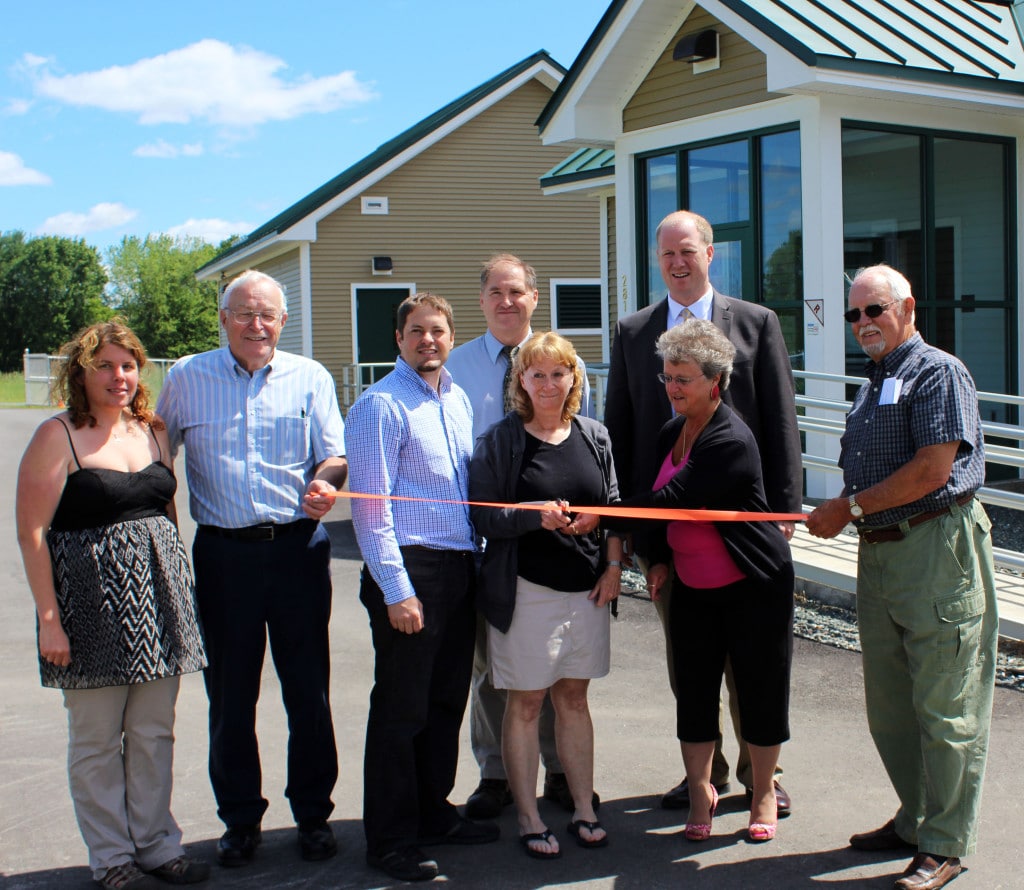
The towns of Canaan, VT and Stewartstown, NH celebrated the completion of their shared $4.1 million wastewater treatment plant with a ribbon-cutting ceremony on Thursday, June 25, in Canaan. The total cost of the facility improvements was $4.12 million and the towns received $2.41 million in grant money as well as a $1.69 million low interest loan from the U.S. Department of Agriculture (USDA) Rural Development. The new system replaces a decades-old facility that was costly to operate and did not meet state and federal water quality standards.
Tata & Howard, Inc. provided complete consulting engineering services for the design and construction of the wastewater treatment facility project that consisted of a complete upgrade of four pump stations and the 0.185-MGD, 3-cell lagoon wastewater treatment facility. The upgrades provide the towns with a state-of-the-art, reliable wastewater treatment facility that meets stringent Effluent Discharge limits to the Connecticut River and allows for a more efficient treatment process. The new influent screening and grit removal processes extend the life of the treatment facility components, and septage receiving allows for additional income and also provides service to the other residents of the town that are not on public sewer. The design incorporated numerous energy efficient features, including variable-frequency drives on all motors and aeration blowers, a wood pellet boiler for heat, energy efficient windows, and insulated concrete block walls, resulting in a reduction in annual operation and maintenance costs. The pump stations were upgraded to eliminate the operator from entering below grade structures and allow for low-cost future replacement.
